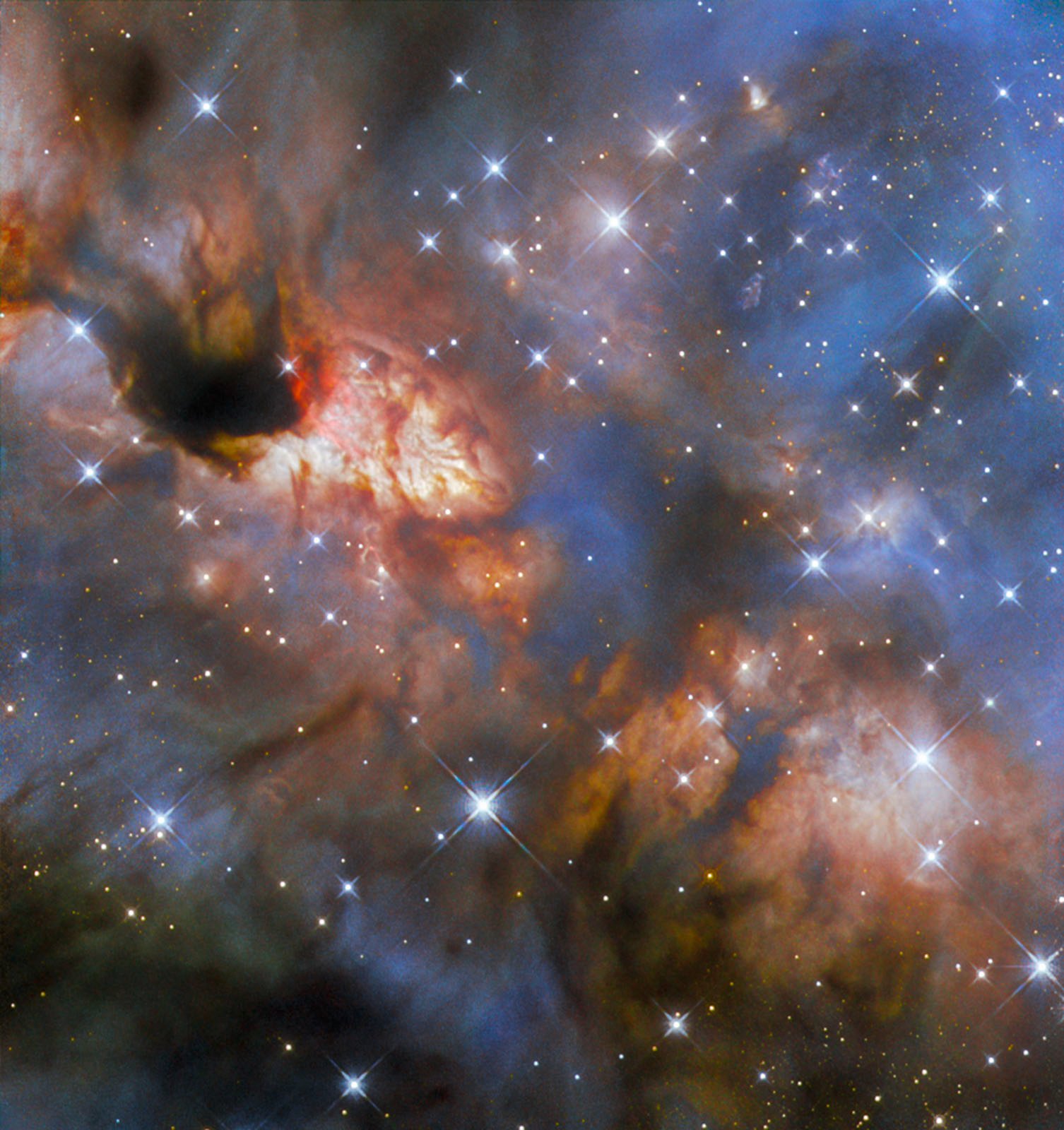Hubble Captures a Colorful Stellar Nursery in the Milky Way

The Hubble Space Telescope (HST) has done it again, delivering a spectacular image of the cosmos that is a veritable smorgasbord of color and detail.
The latest “Picture of the Week” features a relatively nearby star-forming region known as IRAS 16562-3969. Within the Milky Way galaxy in the constellation Scorpius, the area is about 5,900 light-years from Earth.
Scientists compiled the new image using data from Hubble’s Wide Field Camera 3 (WFC 3). The telescope utilized four separate filters to collect the requisite data. These filters, like the specialized optics on other telescopes like the James Webb Space Telescope, allow precise wavelengths of light through to the image sensor within. Scientists can perform specialized research by controlling the wavelengths of light that are exposed.
These filters also make it possible to create beautiful images like this because many details in space are invisible in visible wavelengths, the electromagnetic radiation that human eyes see.
As PetaPixel has written about on numerous occasions, the raw observational data from Hubble (and Webb) arrives on Earth in monochrome image files. Image processing specialists can then follow chromatic ordering to assign colors to different wavelength channels, bringing the cosmic photos to life.
These colors are technically “false colors” insofar as the cameras did not capture them. However, the colors assigned to wavelength channels during processing align with how human eyes see color, so the colors are grounded in reality. For example, mirroring the visible spectrum, scientists typically assign bluer colors to shorter wavelengths and redder colors to longer ones. The resulting data is not only beautiful, but it has scientific meaning and conveys true information about the scene, even if the colors have been digitally applied.
In this particular image, there is a massive central star that is about 30 times the mass of the Sun. This star is still forming. It can be tricky to see, though, because of how Hubble sees light. The team explains:
At the near-infrared wavelengths to which Hubble is sensitive, the central region appears dark because there is so much obscuring dust in the way. However near-infrared light leaks out mainly on two sides — upper left and lower right — where a powerful jet from the massive protostar has cleared away the dust. Multi-wavelength images including this incredible Hubble scene will help us gain a better understanding of how the most massive, brightest stars in our galaxy are born.
It is incredible to consider a star with 30 times the mass of the Sun being almost entirely obscured by dust. That is some serious dust.
This is an area where the James Webb Space Telescope specializes, as it can see further into infrared wavelengths than Hubble, enabling the telescope to more effectively peer through dust.